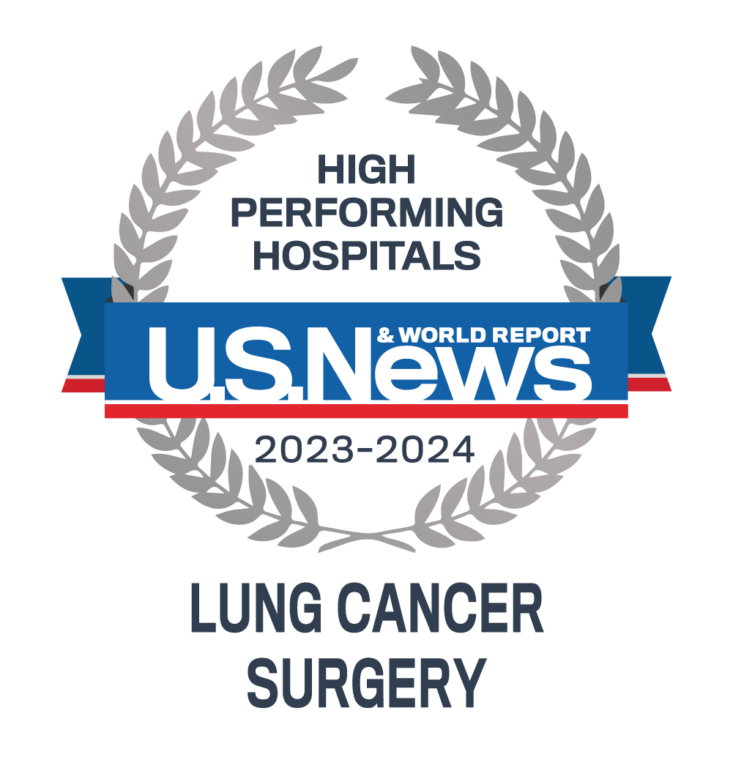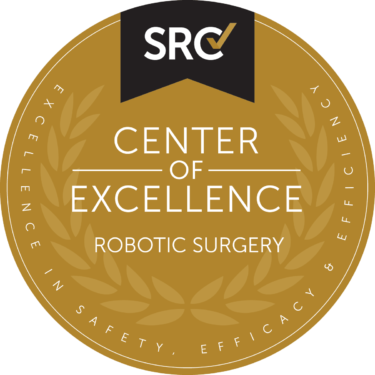Lung Cancer Surgery - Robotic & VATS
Why Choose Hoag for Lung Surgery?

When it comes to diagnosing and treating lung cancer, Hoag Family Cancer Institute is a nationally recognized leader, performing the highest volume minimally-invasive lung surgeries in Southern California.
Our expert surgical team at Hoag performs more robotic procedures than any other medical center in Orange County. Being a high-volume lung surgery program enables the lung cancer experts at Hoag to achieve a technical skill level not all facilities can match.

Robotic Surgery to Treat Lung Cancer
As one of the largest robotics program in the United States, Hoag has performed over 20,000 surgeries using robotic technology. Learn more about Hoag’s Robotic Surgery Program for treating cancer.
A Highly Precise, Minimally Invasive Alternative to Traditional Lung Surgery
Our advanced da Vinci® robotic platform consists of:
Ergonomically designed surgeon’s console
Patient-side cart with interactive robotic arms
High-performance vision system
Proprietary EndoWrist® Instruments via four robotic arms
Benefits of robotic-assisted surgery for lung cancer:
Interactive instruments mimic and enhance surgeon’s hand movements
Minimize hand tremor for precise operations on delicate lung tissue
Dramatically enhances visualization, precision, control, and dexterity
Overcomes limitations of conventional procedures
Helps physicians perform highly complex surgery
Increases precision and improves patient outcomes
Who is a Candidate for Robotic-Assisted Lung Surgery?
Robotic-assisted surgery is not appropriate for every patient needing lung surgery. Since the goal is a successful surgical result, each patient is evaluated individually to determine if robotic-assisted surgery is the best option for the individual patient.
Video Assisted Thoracoscopic Surgery (VATS) to Treat Lung Cancer
VATS is a minimally invasive approach to lung cancer surgery requiring only four small incisions without rib spreading or muscle damage, as compared to conventional thoracotomy (lung surgery) which requires a six to eight inch incision, spreading of the ribs, and possibly severing muscles. During a VATS procedure, surgical instruments and a thoracoscope with a small camera lens are inserted through these small openings, producing high-resolution images on a video monitor that provides the VATS surgeon with a detailed, magnified view of the surgical site. A segment, lobe or entire lung can be removed through a VATS procedure, depending on the patient’s condition and extent of cancer.
About 75 percent of lung cancer patients are candidates for this minimally-invasive procedure. This procedure is especially beneficial for patients who may otherwise have been considered inoperable due to their age, or other complicating medical conditions.
Patient Benefits of VATS
The minimally-invasive VATS technique offers clear advantages over the open-chest traditional thoracotomy procedure, including:
Small, keyhole incisions
Shorter hospital stay
Less post-operative pain
Less risk of post-operative complications
Faster recovery time
VATS provides a safe, minimally invasive approach to lung cancer surgery. Additionally, VATS has been shown to result in cancer survival rates that are equal to, or better than, traditional open procedures, which is why it’s the preferred surgical treatment option at Hoag Family Cancer Institute.
Who is a Candidate for VATS?
Individuals with localized, early stages of lung cancer are optimal candidates for surgery, and specifically the VATS procedure. Additionally, older patients (particularly those with complex medical conditions) tend to tolerate the VATS procedure much better than the open, traditional procedure. However, candidates still must be physically strong enough to tolerate surgery.
Individuals with regionally advanced stages of lung disease can often be treated aggressively with chemotherapy and/or radiation therapy in an effort to shrink the cancer enough to make it surgically removable.